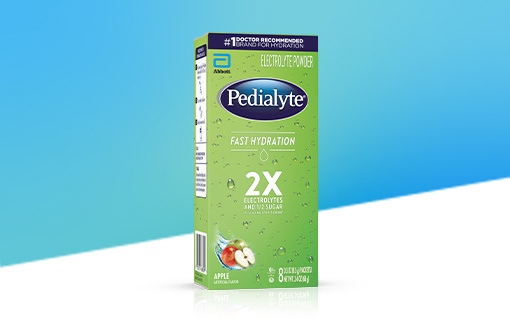
Pedialyte® Fast Hydration Powder Packs
Made to stash in your backpack, office, gym bag, and beyond for on-the-go hydration.
Shop Now
Pedialyte is scientifically formulated with a precise balance of electrolytes and glucose to rehydrate cells to help you feel better fast.
Pedialyte has 3 key electrolytes for hydration—sodium, chloride, and potassium. When your body loses enough of these electrolytes along with fluids, you become dehydrated. Unlike water and sports drinks, Pedialyte has an optimal balance of sugar and sodium to help replenish fluids and electrolytes more effectively.
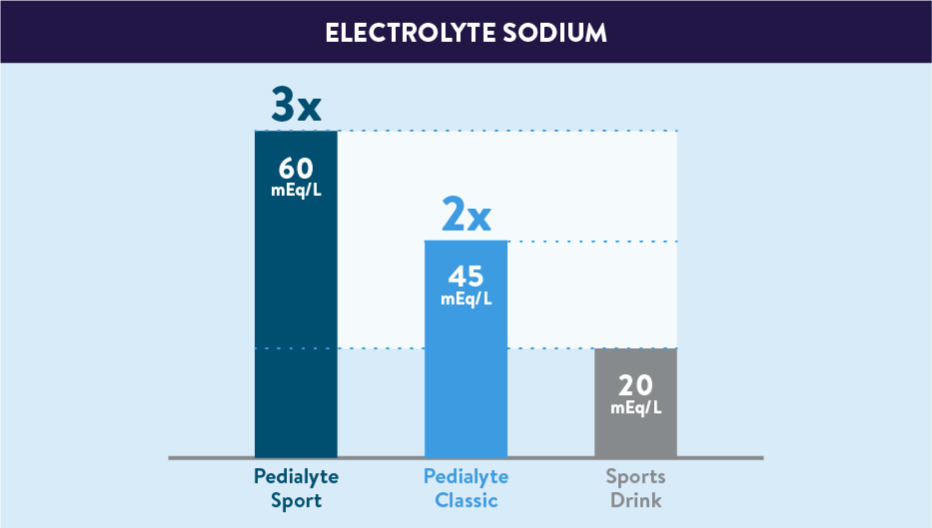
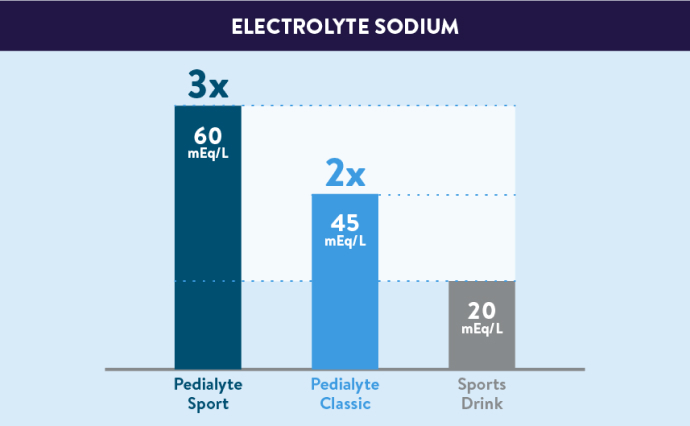
With 2-3x the electrolytes vs the leading sports drink,*,† Pedialyte is designed for fast, effective rehydration.¹
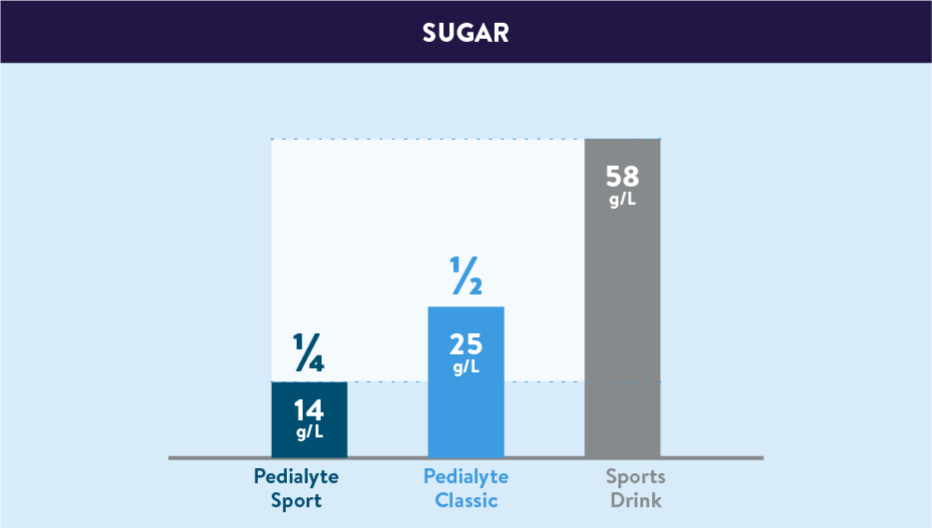
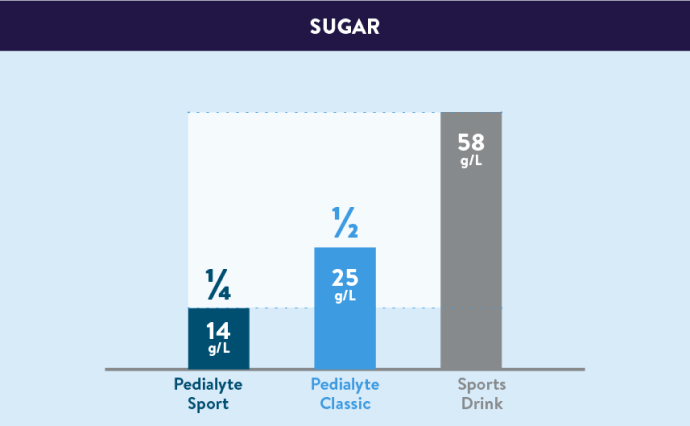
Pedialyte has one-fourth to one-half the sugar of the leading sports drink.*,† Sports drinks contain too much sugar and can slow down the hydration process.2
Electrolytes are minerals essential to your health. They help carry electrical signals that power your nerves and muscles, maintain your blood’s proper pH, and balance fluids in your body. You get electrolytes from what you eat and drink, and lose some amounts of them any time you lose fluids (like when you sweat or go to the bathroom).
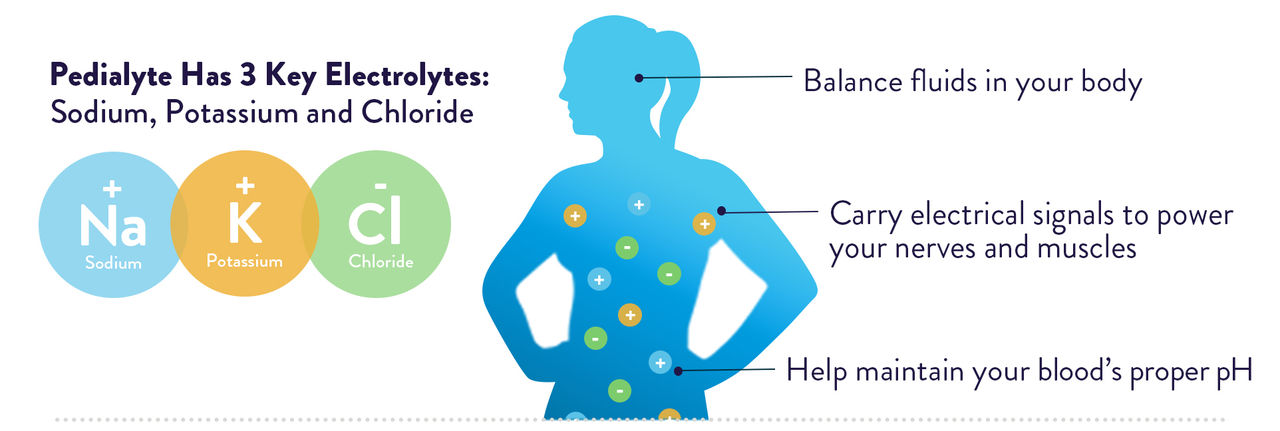
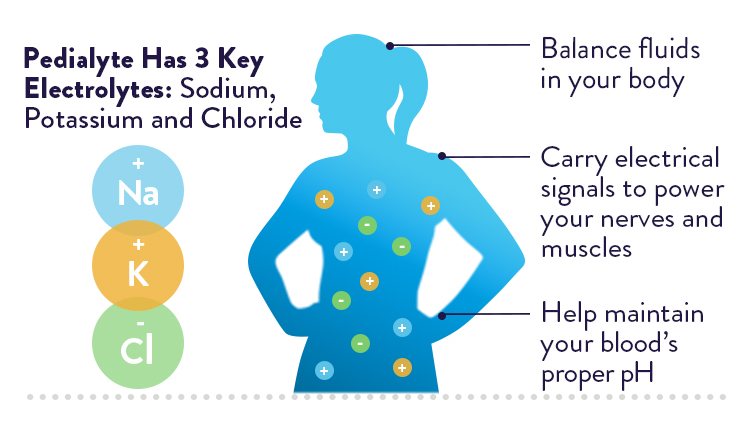
Pedialyte has been backed by science since 1966 and is the #1 brand recommended by pediatricians, doctors, and pharmacists.


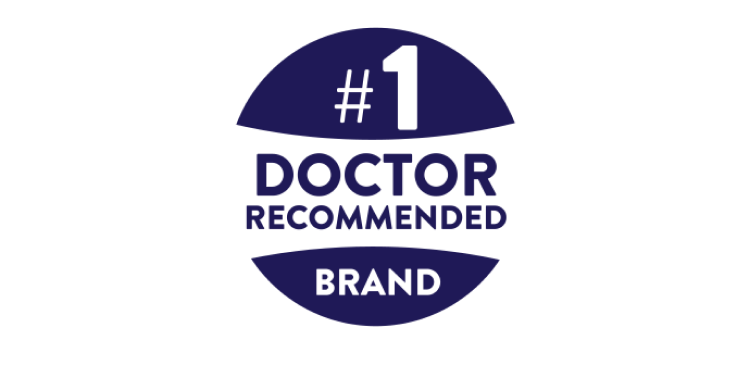
* Pedialyte Classic has 1030mg sodium and no more than 25g sugars per liter; leading sports drink has ~460mg sodium and ~58g sugars per liter.
† Pedialyte Sport has 1380mg sodium and no more than 14g sugars per liter; leading sports drink has ~460mg sodium and ~58g sugars per liter.
‡ 60 mEq sodium electrolytes per liter vs 45 mEq in original Pedialyte.
References:
1. Kleinman RE, et al, eds. Pediatric Nutrition. 8th ed. Elk Grove Village, Illinois: American Academy of Pediatrics; 2019. 2. Leiper JB. Nutr Rev. 2015;73(Suppl 2):57-72.
Links which take you out of Abbott Laboratories worldwide web site are not under the control of Abbott Laboratories, and Abbott Laboratories is not responsible for the contents of any such site or any further link from such site. Abbott Laboratories is providing these links to you only as a convenience, and the inclusion of any link does not imply endorsement of the linked site by Abbott Laboratories.
Do you wish to leave this site?
STAY CONNECTED